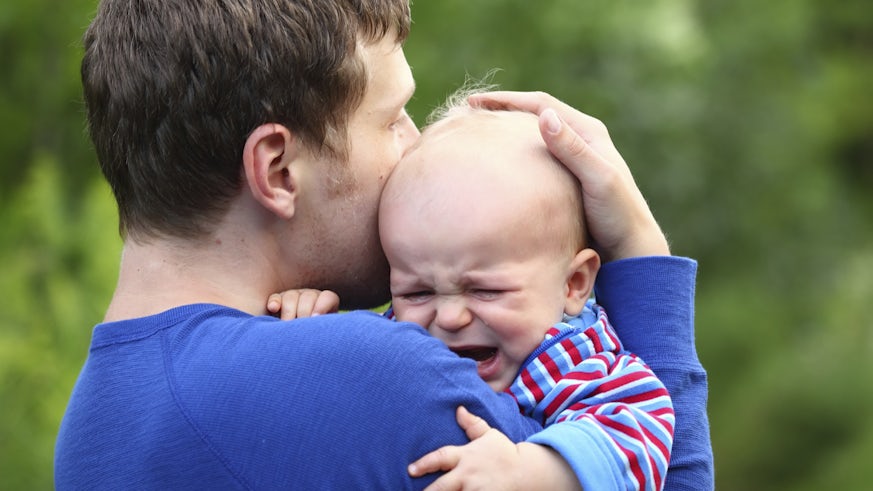Saving children from abuse
29 July 2015

New doctor test to spot children at risk of death by physical abuse
Experts in child protection
have developed a test designed to help doctors recognise children suffering
from life-threatening physical abuse and enable child protection services to
protect them from future harm.
Abusive Head Trauma (AHT) – sometimes referred to as ‘shaken baby syndrome’ -
is the leading cause of death among children who are abused. It is estimated
that as many as 34 in every 100,000 infants less than one year of age are
victims of AHT, though the true figure is unknown because many cases of AHT are
missed and others may not come to the attention of clinicians.
To address this, researchers at Cardiff have developed and validated a
diagnostic test to help doctors determine how likely it is that a child with
head injuries - aged less than two years old - has been abused. Their findings
are described in
a paper published today in the journal Pediatrics.
With a proven accuracy, the easy-to-use test uses a checklist of six clinical
signs to give different likelihoods of AHT to help clinicians in their
decision-making. These signs include fractured ribs, long bone fractures,
suspended breathing, seizures, retinal bleeding and head or neck bruising.
If following an assessment doctors identify three or more of these signs and no
clear accidental cause has been established, then abuse is a very likely cause
of the head injury. Further investigations by a team of clinicians and child
protection professionals are then required to confirm or exclude AHT.
“It is vitally important that abusive head trauma is diagnosed accurately so
that the team looking after the child can ensure that they receive appropriate
support and are protected from further harm,” said lead researcher Professor
Alison Kemp from the University’s School of Medicine.
“Equally important is that accidental head injuries are not wrongly diagnosed
as abusive, as this can have devastating consequences for the families
involved.
“However, arriving at these decisions can be extremely difficult – especially
for doctors who do not see many cases of severe child abuse. This study offers
an evidence-based clinical prediction tool to help doctors make these extremely
important decisions, where the life or death of a child often hangs in the
balance.
“Essentially, we are combining the scientific evidence at the doctor’s
fingertips.”
Professor Kemp is quick to point out that in order to arrive at an accurate
diagnosis, the findings of the test must be assessed in combination with all
the other information available about the circumstances of the child’s injury
and its family.
In an era when the diagnosis of AHT continues to be contested in public and
legal arenas, Professor Kemp says that the test can provide doctors with an
additional diagnostic aid, rooted in scientific evidence, to support their
decisions.
Previous studies estimate that half of all children younger than two years old,
who have traumatic brain injury, have suffered from AHT.
Following preliminary investigations, the so-called ‘Pred-AHT’ test could play
an important role in helping doctors to identify children who have suffered
from AHT and exclude those who have not.
The researchers say that the test will be of enormous value not
only to front-line doctors, but also to other agencies involved in child
protection decision making such as the police, legal practitioners, social
workers, the judiciary and forensic pathologists. Their focus now lies in
implementing Pred-AHT into practice.
The National Institute for Social Care and Health Research (NISCHR) funds this
project, which is still ongoing.